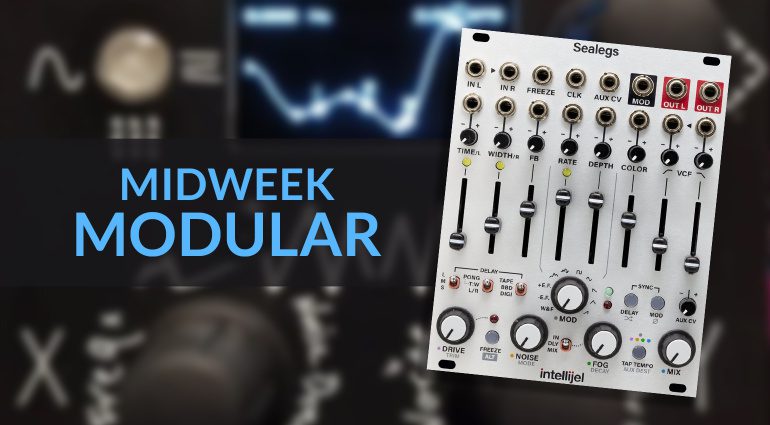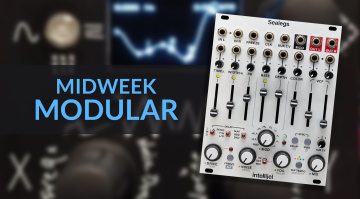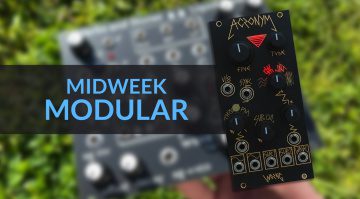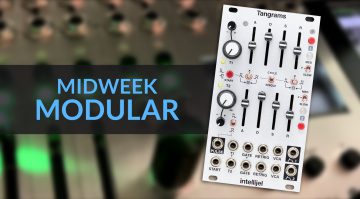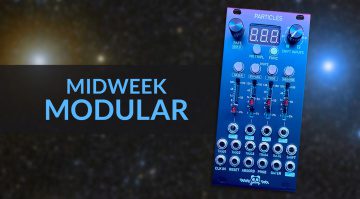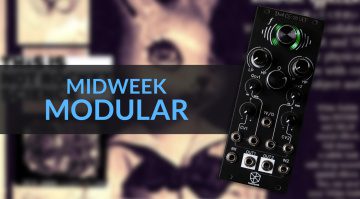Midweek Modular: Sealegs, SoundStage II and Marie’s LFO
This week, we find our Sealegs with Intellijels wobbly delay, get mixed in WORNG’s SoundStage II and draw our own waveforms with Marie’s LFO.
Midweek Modular
In the cranial web of interconnected modular, these are the neurons that traversed time and space to reach my orbitofrontal cortex.
Intellijel Sealegs
Having spent three hours rolling about in a tiny boat in the choppy bay of Naples this summer, I have some understanding of the importance of sea legs. Intellijel has captured this nautical necessity and pumped it into a rather nice and wobbly stereo delay and reverb. Let’s hope it doesn’t make you want to hurl.
Sealegs contains three different sorts of delay; Tape, Bucket Brigade and Crossfading Digital. Around these repeating circuits are input saturation, low and high pass filters, noise and crackle emulation, and a 1970s-inspired reverb. Intellijel has pulled out all sorts of parameters into modulatable possibilities and also sports several internal modulators.
The idea was to design the warmest, most cuddly, organic and life-affirming delay module Intellijel could come up with. The circuit emulations are undoubtedly excellent. The 96 kHz 24-bit audio I/O with 32-bit floating point processing will keep the quality pristine. And the straightforward design with maximum slider-tastic playability definitely wins. Have a swim in MylarMelodies excellent demonstration.
You are currently viewing a placeholder content from YouTube. To access the actual content, click the button below. Please note that doing so will share data with third-party providers.
WORNG Electronics SoundStage II
SoundStage is the perfect module for people who don’t like mixing. Or, perhaps, don’t have the room (or patience) for all those faders, panning knobs and EQ channel strips. SoundStage II gives you 21 inputs scattered about a visual representation of a room. The horizontal placement of the patch sockets dictates the panning, whereas the vertical position dictates the frequency content. So, with a single patch, you can place a sound in the stereo field and EQ it to fit around other voices.
Each input has a resonant -12dB Sallen-Key filter to define low, low mid, high mid and high voices. You have some control over how deep that goes, and the filters can be pinged if that’s what you want to do. The output control also has CV control, so you can employ some sidechain compression.
The new feature of version II is the FX send and return. You can pull a reverb or other effect into the mix. WORNG has also implemented a load of other improvements.
Otherwise, it’s a brilliant way to spread your Eurorack voices and help them fit together in a mix without having to do very much yourself.
You are currently viewing a placeholder content from YouTube. To access the actual content, click the button below. Please note that doing so will share data with third-party providers.
Likaon Instruments Marie’s LFO
Marie’s LFO was inspired by a conversation with the irrepressible Marie Ann Hedonia and born out of ideas Daphne Oram had years ago. Marie’s LFO realises the idea that you can draw your own waveforms. That’s pretty awesome.
You construct the waveforms using Bézier curves, similar to those in Adobe Illustrator. Using an encoder you can select and control points, bend and define the shape to generate the perfect moving voltage for controlling your modules. You can do this in and out of sync, using MIDI or triggerable like an envelope. The module has 4 outputs that run on the same curve but can be offset from one another. You can push it into noise; you can push it into audio rate and lose hours fiddling with nodes and nodules.
You are currently viewing a placeholder content from YouTube. To access the actual content, click the button below. Please note that doing so will share data with third-party providers.
- Likaon Instruments website.

 4,7 / 5,0 |
4,7 / 5,0 | 